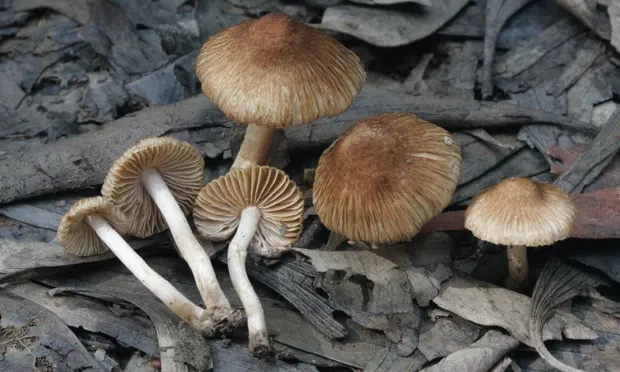
New species of porcini, chanterelle and portobello mushrooms were among 2,000 new species of fungi discovered in 2017, which scientists say shows how little is known about the organisms.
More than £30bn of edible fungi are sold each year, according to the State of the World’s Fungi report published on Wednesday by scientists at the Royal Botanic Gardens Kew in the UK. But the lifeforms are even more vital to plants – 90% rely on fungi to thrive – and many human medicines such as penicillin derive from fungi.
Other fungi, from mushrooms to moulds to yeasts, also kill many plants, and global trade is pushing diseases into new countries, such as ash dieback that has spread across the UK. However, just 144,000 species are known to science, from a total number estimated at about three million.
“Their ability to play both Dr Jekyll and Mr Hyde roles within their environments is unparalleled [but] historically they have remained in the shadows when compared with research on plants and animals,” said Prof Kathy Willis, director of science at Kew. “We have only just started to uncover the secrets of this incredible and diverse group of organisms.”
New mushroom species were uncovered around the world. Three species of golden chanterelles were found in Canada – all edible – while other new chanterelles were found in the Central African Republic and South Korea. A new porcini mushroom – also confirmed as edible – was found in India. However, scientists have not always needed to range so far – Kew scientists found three new species of porcini in a packet of dried Chinese mushrooms bought in London in 2013.
Further new discoveries include two new species of the black musk truffle from Hungary and 33 new species of Agaricus from China, Thailand, Brazil, Spain and Italy. The Agaricus genus includes the commonly eaten button mushroom, also sold as portobello mushrooms when the caps are fully expanded or chestnut mushrooms when the caps are closed.
Among non-edible groups, there were 179 new fibrecap species from Australia, Europe and India. Fungi in this genus, called Inocybe, produce compounds such as the hallucinogen psilocybin and toxin muscarine. Other striking discoveries included a vivid orange, salt-tolerant mushroom from the Andes in Chile.
New moulds were found in an extraordinary range of environments, with 37 new species of the ubiquitous Aspergillus mould discovered in soils, plant tissues, a cave wall biofilm, a baby-carrier backpack, an oil painting, a fingernail and house dust.
The Kew report involved more than 100 scientists from 18 countries and reported on fungi that can help plants survive droughts and others that can break down woody plant residues into fuel. “As the foundation of the world’s ecosystems, fungi potentially hold the answers for everything from food security and biofuels to desertification and medicinal advances,” said Willis.
But she also warned that more research was needed on dangerous fungi: “Throughout the world there is significant concern related to the spread of fungal pathogens that are devastating crops and wild plant communities, a threat which seems to be increasing with climate change.”
























